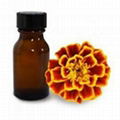| Model: | NH05 |
|---|---|
| Brand: | Nature Herbs |
| Origin: | Made In India |
| Category: | Agriculture & Foods / Gardening / Plant Seeds |
| Label: | Botanical Extracts , Herb Seeds , Essential Oils |
| Price: |
-
|
| Min. Order: | 100 kg |
Product Description
Introduction
Plants are the first medicines for mankind and hundreds of plant species are harvested for their medicinal properties all over the world. In spite of modern development of sophisticated pharmaceutical chemicals to treat illnesse, medicinal plants remain an important tool for treating illness. The world market for plant derived chemicals viz., pharmaceuticals, fragrances, flavours and colour ingredients exceed several billion dollars per year. The demand for the products obtained from these plants such as phytochemical, steroidal, biologically active compounds, alkaloids, etc Classic examples of phytochemicals in biology and medicine include taxol,vincristine, vinblastine, colchicine as well as the Chinese antimalarial - artemisinin and the Indian ayurvedic drug -forskolin.
Forskolin obtained only from Indian species of Coleus forskholi. Forskolin has a unique property of activating almost all hormone sensitive adenylate cyclase enzymes in a biological system.
Coleus forskohlii is an important indigenous medicinal plant in India. It has been used in traditional
Ayurvedic medicine for curing various disorders and this is the only source of the diterpenoid forskolin. .
Forskolin has a unique property of activating almost all hormone sensitive adenylate cyclase enzymes in a biological system & is used for the treatment of eczema, asthma, psoriasis, cardiovascular disorders and hypertension, where decreased intracellular cAMP level is believed to be a major factor in the development of disease process. This review article has through light on a comprehensive account of the morphology, distribution, medicinal uses, phytochemistry, pharmacological activities and biotechnological approaches for forskolin production.
1. Forskolin is reported to be useful in the treatment of congestive heart failure, glaucoma, asthma and certain type of cancers
2. In addition, it has been shown to have anti-inflammatory property
3. C. forskohlii is the only source of forskolin & one of the most potential medicinal crops of the future, as its pharmacopieal properties have been discovered recently
4. The pharmaceutical industries recognize it as most medicinally and economically important. It is said that the all plant parts of Indian herb C. forskohlii almost have traces of forskolin, the roots are the main source possessing 0.1 to 0.5 per cent and preferred for its extraction
5.The pharmaceutical industries are mainly dependent upon the wild population of the plant for the
supply of tuberous roots for forskolin extraction. The large scale and indiscriminate collection of the wild
material from the forests and inadequate attempts either to allow its replenishment or its cultivation has led to C. forskohlii being listed as endangered species
6. Coleus forskohlii contains many chemical compounds that are diterpenes in nature. They belong to
two groups viz., abietane diterpenoids (abietanoids) and 8, 13-epoxy-labd-14 en-11-one diterpenoids.
The most investigated compound is forskolin. Initially it was named colenol. However, after the identification of other colenols and diterpenoids, it was renamed as forskolin 12. Chemically it is 7β-
acetoxy-8, 13-epoxy-1α, 6β, 9 α-trihydroxy-labd-14 en-11-one (Figure 3). Forskolin is routinely assayed by HPLC using a mobile phase of water-acetonitrile (55:45)12a.
Chemical structure of forskolin
arjunic acid, arjungenin 62, crocetin dialdehyde 69, stigmasterol 70, β-sitosterol 33, genkwanin, guaicol
glycerin ether 24, caffeic acid 67,coleoside B 71, colexanthone 63, 2,6,10,14-tetramethylpentadecane;
2,6,10,14-tetramethylhexadecane, 2,6,10,14-tetramethylheptadecane 13, monogalactosyl diacylglycerol, digalactosyldiacylglycerol, trigalactosyl diacylglycerol, tetragalactosyl diacylglycerol
and sulfoquinovosyl diacylglycerol 72
4. Essential oil
Coleus forskohlii roots contain an essential oil, with an attractive and spicy note. It can find
application in the food industry as a flavourant. The major constituents of the oil are 3-decanone
(7%), bornyl acetate (15%), a sesquiterpene hydrocarbon (7.5%), β-sesquiphellandrene (13.15%) and
γ-eudesmol (12.5%). The essential oil extracted from the stems of the plant contains insignificant
quantities of β-phellandrene, α-pinene, α-copaene, sabinene, caryophyllene oxide, limonene, β-
caryophyllene and α-humulene. An essential oil has been isolated from the inflorescence.
Forskolin derivatives in cardiac care
In spite of the multifaceted pharmacological actions of forskolin including positive inotropic,
hypotensive, bronchospasmolytic and antiglaucoma activities, this molecule has not been available as
an approved drug. This is due to its poor water solubility (0.001%). Thus forskolin is not used as
intravenous or oral formulation. The nonspecific nature of forskolin activation of adenylyl cyclase
raises the concern that it may be too toxic for clinical use. Therefore, forskolin has been used as a
prototype for developing more potent compounds, with improved water solubility and selective
activation of adenylyl cyclase. Many attempts have been made in this direction. However, the most
potent water soluble forskolin derivative so far produced is 6-(3-dimethylaminopropionyl) forskolin
hydrochloride.
Member Information
| Nature Herbs | |
|---|---|
| Country/Region: | India |
| Business Nature: | Manufacturer |
| Phone: | 18885555 |
| Contact: | Vineet Agarwal (proprietor) |
| Last Online: | 28 Feb, 2015 |
Related Products of this Company
-
Andrographis Paniculata Seeds & Herbs
-
Rosemary - Rosmarinus Officinalis
-
Chamomile (Matricaria Chamomilla) Seeds,
-
Cymbopogan flexuosus - Lemon Grass
-
Tagetes Erecta Seeds & Oil
-
Centratherum anthelminticum Seeds
-
Mucuna Pruriens Seeds & Extract
-
Gloriosa Superba Seeds & Rhizomes
-
Chlorophytum Borivilianum Roots
-
Withania Somnifera Seeds, Roots &










